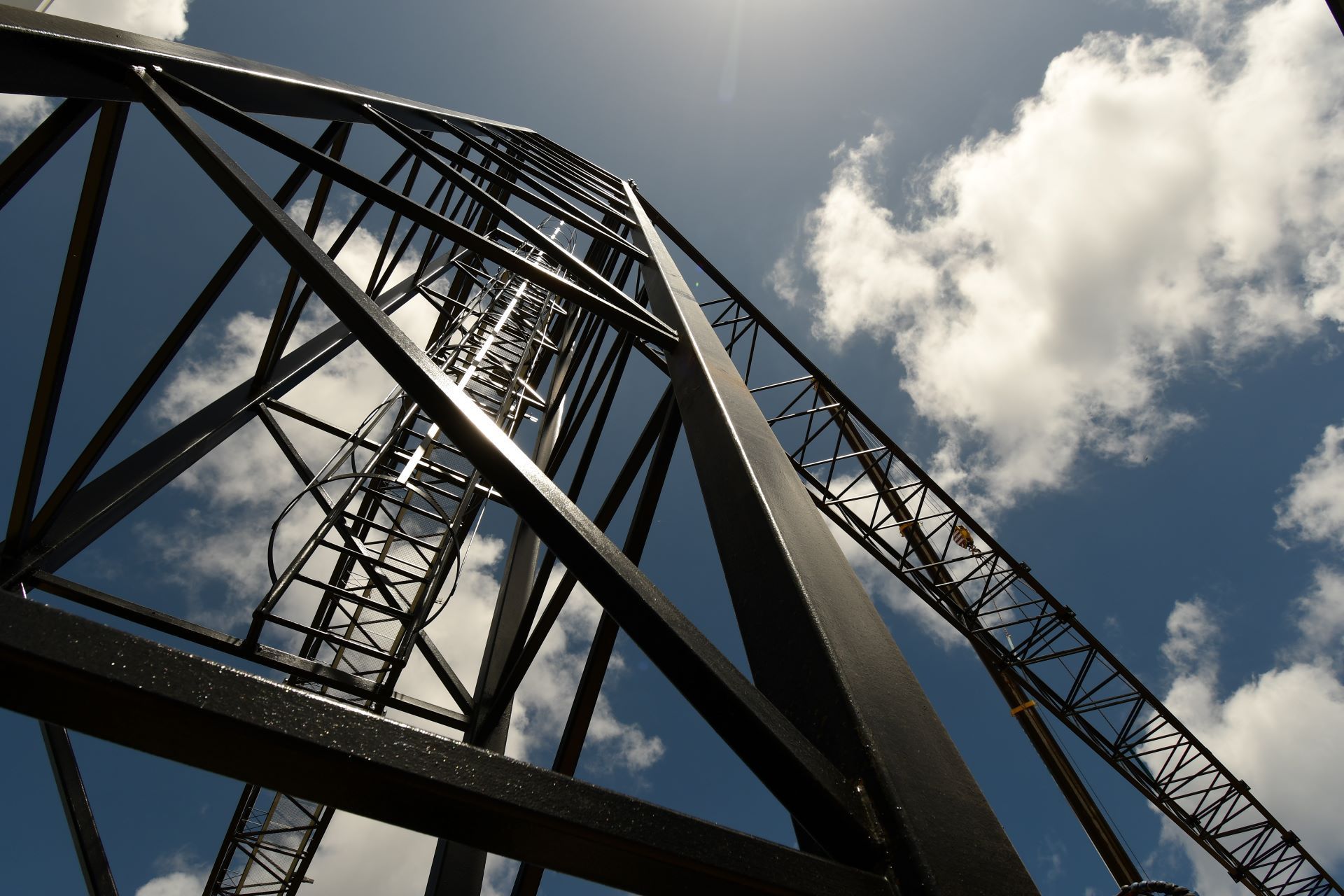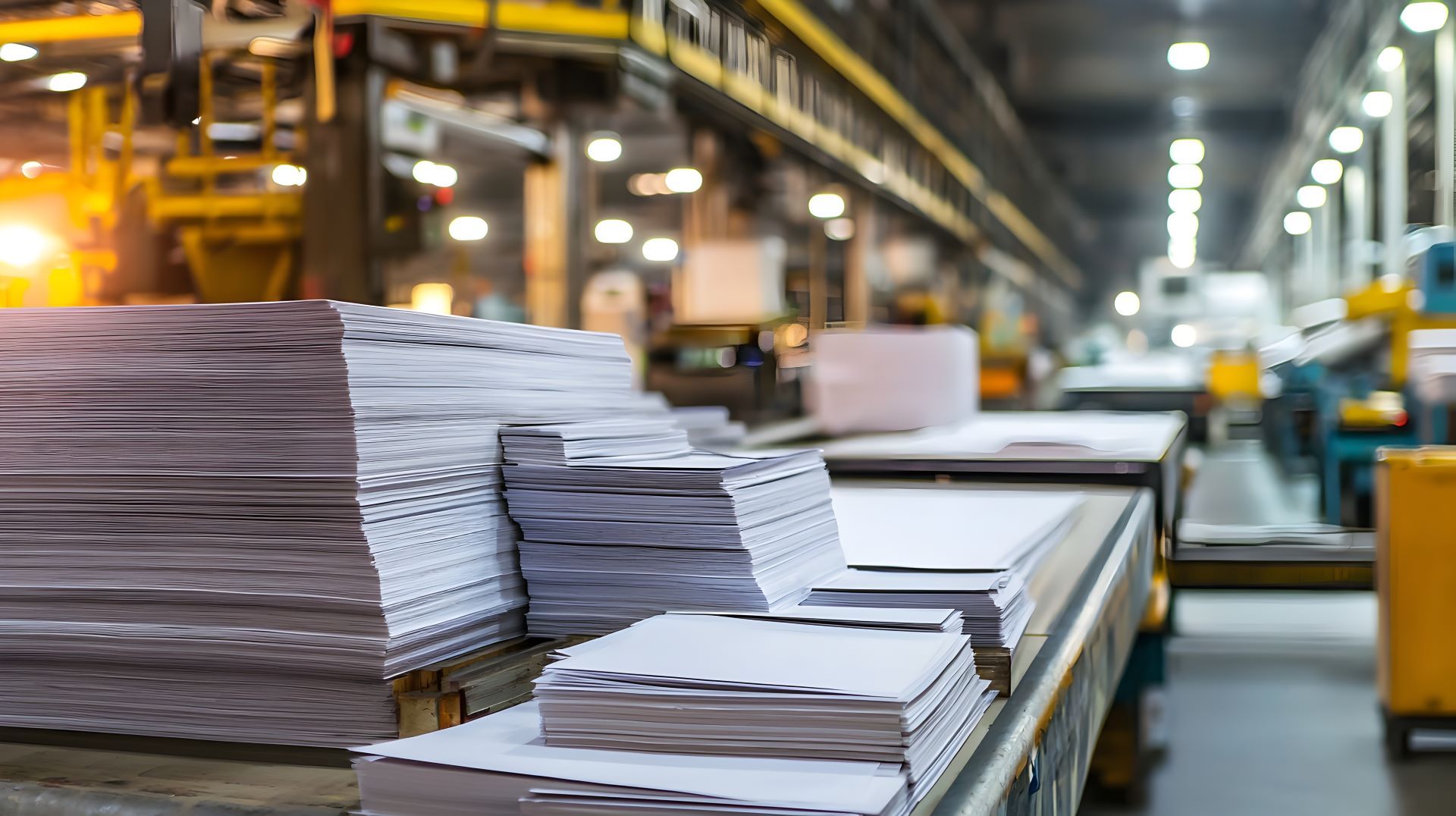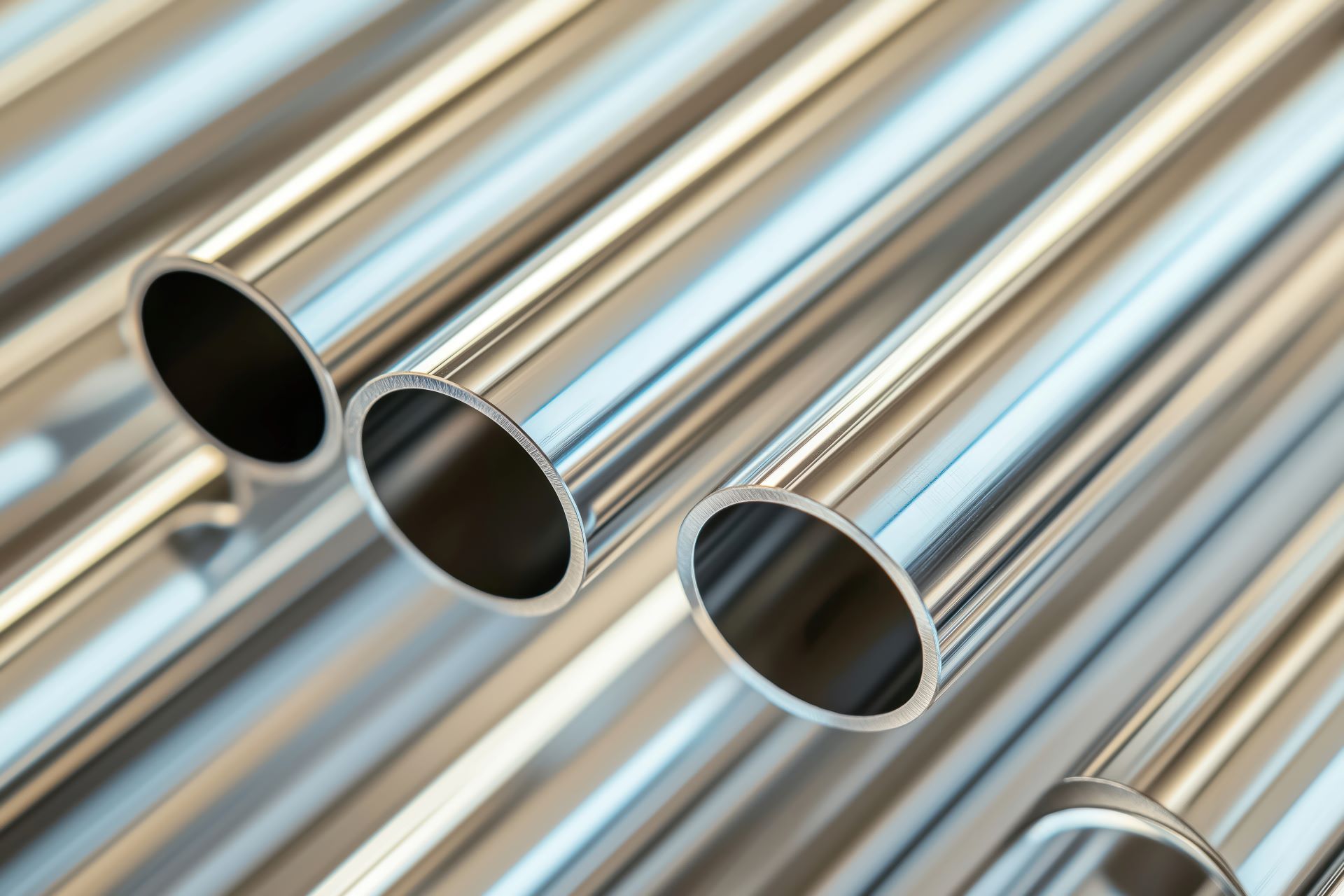1100 vs. 3003 Aluminum: Key Differences for HVAC, Roofing & Signage
1100 and 3003 aluminum are two of the most common non-heat-treatable grades used in industrial and commercial fabrication. While both alloys offer strong corrosion resistance and excellent workability, their mechanical differences make them ideal for specific applications in HVAC systems, architectural roofing, and signage structures.
Understanding where each grade fits and how they behave in real-world fabrication environments helps engineers, buyers, and fabricators choose materials that align with performance, cost, and appearance goals. Action Stainless stocks both 1100 and 3003 aluminum sheet and coil in multiple gauges and tempers, supporting everything from cutting and bending to sourcing ready-to-fabricate materials.
Chemical Composition: Purity vs. Manganese Strength
The most significant chemical distinction between 1100 and 3003 aluminum is the presence of manganese.
1100 aluminum is considered commercially pure, with a minimum aluminum content of 99%. This purity gives it superior corrosion resistance, high thermal conductivity, and ease of formability. However, it also makes the alloy relatively soft compared to others in the 1xxx or 3xxx series.
3003 aluminum is an aluminum-manganese alloy, containing around 1.2% manganese. This addition significantly increases its strength without compromising workability or corrosion performance. While still not heat-treatable, 3003 strikes a better balance between strength and formability in many sheet metal applications.
Key Properties of 1100 vs. 3003 Aluminum
| Property | 1100 Aluminum | 3003 Aluminum |
|---|---|---|
| Aluminum Content (%) | 99.0 minimum | ~98.8 (with 1.2% Mn) |
| Tensile Strength (MPa) | 90–130 | 130–200 |
| Yield Strength (MPa) | 30–95 | 115–145 |
| Elongation (%) | Up to 35% | Up to 30% |
| Formability | Excellent | Excellent |
| Corrosion Resistance | Excellent (especially to water, salt) | Very Good |
| Machinability | Marine, structural, tanks | Fair |
| Weldability | Excellent | Excellent |
| Cost | Slightly lower | Slightly higher |
Formability and Fabrication Performance
Both 1100 and 3003 aluminum are favored for their ease of forming, bending, and drawing. These characteristics make them ideal for ductwork, roofing panels, flashing, and sign panels. However, their behavior during fabrication differs slightly due to their mechanical strength.
- 1100 aluminum is more malleable, especially in soft tempers (like H14 or H22). This makes it suitable for deep drawing or intricate designs, but the lower strength means it can dent or deform more easily during use.
- 3003 aluminum handles forming with added durability. It’s better suited for structural applications that require more rigidity after bending, such as corrugated panels or decorative trims.
Action Stainless supports both grades with
in-house cutting and shearing services, ensuring accurate blanks and faster project turnaround for HVAC and signage fabricators.
Welding, Brazing, and Joining
Both alloys offer good weldability, but there are subtle differences in post-weld strength and compatibility:
- 1100 aluminum welds cleanly using conventional methods like TIG and MIG. However, because of its softness, the welded area may remain weaker than the base material, which can be a limitation for load-bearing applications.
- 3003 aluminum provides better post-weld strength due to the manganese content. It also responds well to brazing, making it a popular choice for assemblies that require long seams or thermal junctions in HVAC evaporators or signage frames.
In environments where strength around the joint is essential, 3003 often provides better long-term performance.
HVAC Applications: Ducting, Panels, and Fittings
In HVAC fabrication, the choice between 1100 and 3003 aluminum depends on how the material will be handled and what performance is required in service.
- 1100 is common in low-pressure ductwork and non-structural parts, where its light weight and high formability streamline fabrication. For curved transitions or rolled edges, 1100 is especially efficient to work with.
- 3003 is preferred for plenums, dampers, and areas with higher mechanical stress, especially when vibration, wind load, or air pressure changes are a concern. Its added strength supports longevity and dimensional stability.
Action Stainless stocks both grades in gauges appropriate for air handling, and can assist fabricators with selecting the right alloy based on design loads and project volume.
Roofing and Architectural Cladding
In commercial and industrial roofing, corrosion resistance, strength, and aesthetics all matter. Both 1100 and 3003 aluminum offer long-term durability, but 3003 offers added resilience in exposed applications.
- 1100 performs well in flashing, valley pans, and interior aluminum trim, especially when aesthetics or conductivity are more important than structural strength.
- 3003 is ideal for standing seam panels, soffit systems, and exposed cladding, particularly in environments with wind exposure or mechanical stress. It also holds up better to minor foot traffic or rooftop servicing.
Because it’s more resistant to denting and creasing,
3003 provides more design flexibility without sacrificing surface finish. Both alloys are available in mill, anodized, or coated finishes depending on the installation requirements.
Signage and Display Fabrication
In the signage industry, formability, surface appearance, and printability all matter. Both 1100 and 3003 are used in display frames, mounting brackets, and decorative panels, but the choice often depends on finish and load.
- 1100 aluminum provides the cleanest surface for anodizing or reflective finishes, making it ideal for decorative signage where visual clarity is important.
- 3003 offers better strength for hanging brackets or panels subjected to wind or touch. It’s also easier to post-process with CNC routing or punching without distortion.
Where strength and aesthetics must be balanced like retail signage or outdoor architectural displays, 3003 often provides the best return.
Inventory and Availability Through Action Stainless
Action Stainless maintains a strong inventory of 1100 and 3003 aluminum sheet, coil, and plate, with common gauges readily available in multiple finishes. We support fabricators and manufacturers in:
- HVAC and mechanical system builds
- Commercial and industrial roofing panels
- Architectural signage and display production
In-house services like
precision shearing, sawing, and sourcing support help reduce waste, speed up your schedule, and improve material flow through your shop.
When choosing between 1100 and 3003, Action Stainless provides more than material we help guide selection, cutting specs, and sourcing logistics based on your end-use.
Conclusion: Choosing Based on Strength, Cost, and Application
1100 aluminum excels in projects where formability, purity, and corrosion resistance are priorities. It’s ideal for ductwork, reflective panels, and non-load-bearing components that benefit from its malleability.
3003 aluminum is the go-to for applications where added strength and long-term durability are essential. It holds its shape better, welds with higher integrity, and tolerates structural use in both roofing and HVAC.
By understanding how these alloys differ in strength, corrosion resistance, weldability, and cost, fabricators and engineers can match the material to the demands of each job. Action Stainless is here to support that decision with expert insight, in-house processing, and consistent material availability across the U.S.






